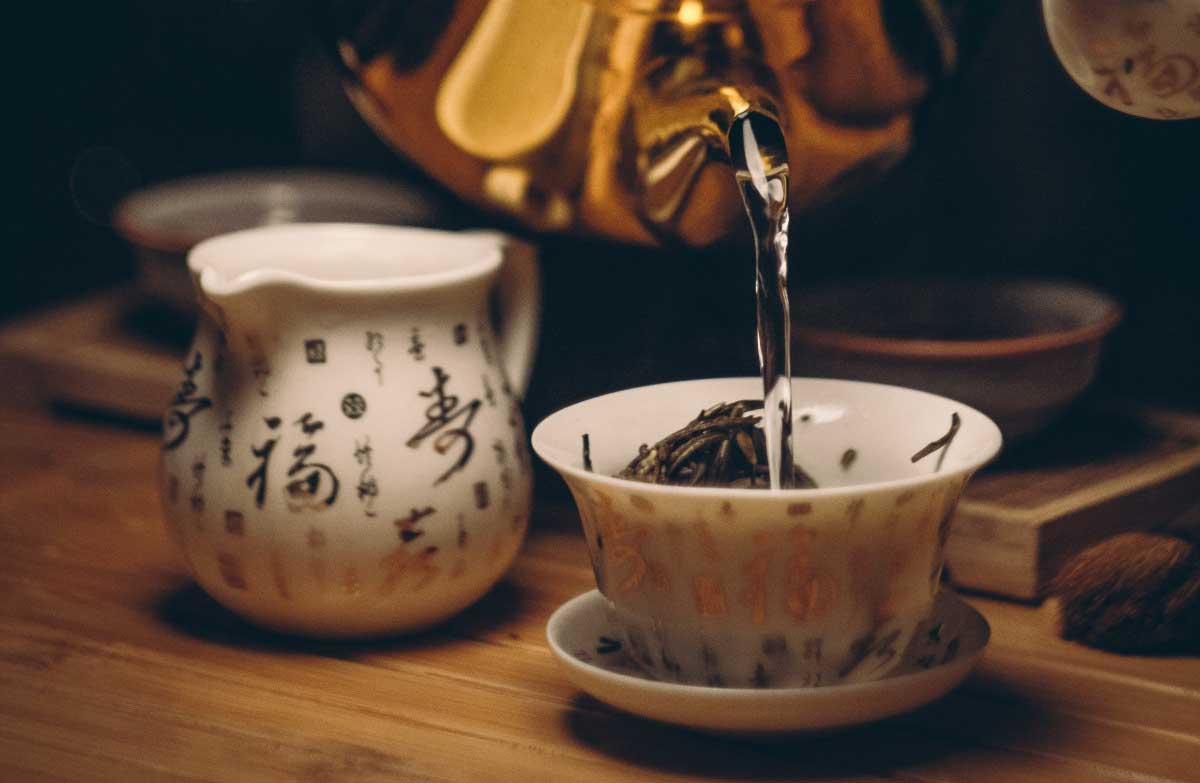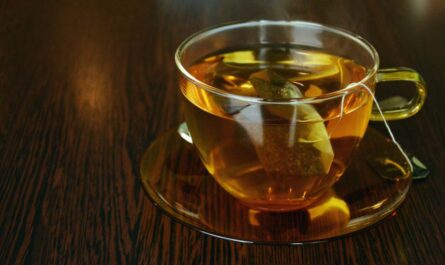Irish breakfast tea vs English breakfast tea: a comparative study. Imagine a crisp autumn morning, sunlight peeking through the windowpanes, casting a warm glow on two steaming mugs. One holds a deep amber liquid, rich and robust, promising a powerful wake-up call. The other, a lighter shade of gold, whispers of delicate floral notes and a gentler embrace. This, my friends, is the age-old debate between Irish and English breakfast tea, each a cornerstone of their respective cultures and boasting distinct personalities. Today, we embark on a journey to demystify these beloved brews, exploring their fascinating origins, unique flavor profiles, and ideal brewing methods. So, grab your favorite mug, settle in, and prepare to be swept away by the enchanting aroma of a brewing revelation.
Demystifying the Origins
Both teas share a common ancestor, tracing their lineage back to the British colonization of India in the 19th century. This period marked the introduction of black tea to the Western world, a discovery that forever altered the course of morning rituals. Yet, like siblings raised in different households, Irish and English breakfast tea evolved distinct personalities, shaped by historical events, trade routes, and cultural preferences.
The Irish Breakfast Tea: Imagine a sip of pure strength, a bold Assam tea forming the core of this brew. Its robust character, reminiscent of malty notes and a hint of smokiness, reflects the Irish love for a hearty start to the day. Some historians even whisper of a connection to the Irish whiskey trade, suggesting that the tea’s strength was meant to complement the fiery spirit. Whatever the reason, Irish breakfast tea stands tall, a testament to the Irish spirit of resilience and a perfect companion for a plate of buttery scones and creamy cheeses.
The English Breakfast Tea: This tea, on the other hand, tells a story of evolution. Starting as a blend primarily of Chinese teas, it shifted its focus to Ceylon and Kenyan black teas, reflecting changing trade routes and the influence of the British Empire. The resulting blend is lighter than its Irish counterpart, with notes of honey, caramel, and a touch of citrus. It’s a tea that whispers of elegance and tradition, perfectly paired with a slice of toast and a dollop of jam.
But fear not, dear reader, for this is not a competition! Both Irish and English breakfast tea offer unique experiences, each catering to different preferences and cultural contexts. The true joy lies in exploring their nuances, discovering your perfect cup, and embarking on a journey of flavor that transcends borders and traditions. So, the next time you reach for your morning mug, remember this: there’s a world of brewing possibilities waiting to be explored, each offering a unique story waiting to be sipped. Now, go forth and conquer your day, one delicious cup at a time!
The Leaves Speak: Examining Ingredients & Flavors
Have you ever entered the world of breakfast teas, bewildered by the seemingly endless rows of boxes labeled “English Breakfast” and “Irish Breakfast”? Fear not, tea-curious friend, for we’re about to embark on a delicious journey to demystify these two popular blends, uncovering their unique personalities and helping you find the perfect morning cup.
But before we steep ourselves in the world of flavor, let’s lift the lid on what’s actually inside these brews.
Deconstructing the Blends: A Peek at the Ingredients
Imagine each breakfast tea as a symphony of leaves, each playing a distinct role in the overall harmony. English breakfast tea typically features a blend dominated by Ceylon tea, known for its bright, brisk character. Think of it as the lively melody that sets the tone. Assam tea, with its robust, malty notes, often joins the party, adding depth and richness like a warm bassline. Kenyan tea might make a cameo appearance, lending a touch of briskness and vibrancy, while Darjeeling, with its delicate floral aroma, can add a touch of elegance in some blends.
Irish breakfast tea, on the other hand, sings a slightly different tune. Here, Assam takes center stage, its malty richness forming the core of the blend. Ceylon tea might still be present, but in a supporting role, adding a touch of brightness and complexity. Kenyan tea is less common in Irish blends, as the focus is on depth and strength.
So, simply put, the key difference lies in the ratio and type of black teas used. English breakfast leans towards a brighter, more balanced blend, while Irish breakfast embraces the bold and malty notes of Assam.
Assam’s Boldness: A Malty Masterpiece
Imagine taking a bite of dark chocolate – that rich, earthy depth is what Assam tea brings to the table. Its full-bodied character and distinct malty notes are like a warm hug on a chilly morning, perfect for those who crave a robust and invigorating start to their day. In Irish breakfast tea, Assam takes the lead, creating a brew that’s strong and satisfying, ideal for those who like their tea with a punch.
Ceylon’s Finesse: A Brighter Counterpoint
Ceylon tea, on the other hand, is like a ray of sunshine in a cup. Its lighter, brighter notes offer a refreshing contrast to Assam’s malty depth. Imagine the delicate aroma of citrus fruits and a touch of spice – that’s the magic of Ceylon tea. In English breakfast tea, Ceylon plays a balancing act, ensuring the blend isn’t overwhelmingly malty. It adds complexity and liveliness, making it a great choice for those who prefer a lighter, more nuanced breakfast tea.
Beyond the Basics: Exploring Additional Notes
While these are the main players, some breakfast tea blends might introduce other characters to the mix. Kenyan tea, known for its briskness and astringency, can add a touch of liveliness, especially to English breakfast blends. Darjeeling, with its subtle floral and muscatel notes, can add a touch of sophistication to both blends.
Sensory Symphony: A Taste of What Awaits
Now, let’s translate these ingredients into the language of your taste buds! English breakfast tea tends to be lighter in body, offering a bright and brisk flavor with moderate astringency. The dominant notes are typically citrusy and slightly malty, with a refreshing finish. Irish breakfast tea, on the other hand, packs a punch with its full-bodied character. Expect a strong, malty flavor with a more pronounced astringency. The dominant notes are rich and earthy, offering a satisfying depth that lingers on the palate.
So, which tea will sing to your soul in the morning? Whether you crave a bright and lively awakening or a bold and comforting embrace, both English and Irish breakfast teas offer a delicious way to start your day. So, grab your favorite mug, brew a pot, and embark on your tea-tasting adventure to discover your perfect morning cup!
Remember, there’s no right or wrong answer – the best breakfast tea is the one that brings a smile to your face and kickstarts your day with a delicious dose of flavor. Happy steeping!
Brewing Techniques: The Art of the Perfect Cup
Water Matters: The Essence of Extraction
Imagine a symphony where the wrong instrument throws off the entire melody. Water plays a similar role in tea brewing. For optimal extraction and avoiding the dreaded bitterness, water temperature and quality are paramount. Black tea thrives in near-boiling water (around 200°F), while green tea prefers a gentler touch, ideally between 160°F and 180°F. Using filtered or spring water ensures your tea’s true essence shines through, free from distracting impurities. How AI, ChatGPT maximizes earnings of many people in minutes
The Vessel’s Influence: Brewing Methods for Every Preference
Each tea has its preferred brewing method, like a tailor-made suit for its unique character. For black tea, a classic teapot allows the leaves to unfurl and release their full flavor. Infusers are handy companions for loose-leaf enthusiasts, while convenient tea bags cater to those seeking a quick and hassle-free cup. Green tea, on the other hand, prefers a more delicate approach. Loose-leaf brewing in a teapot or a traditional Japanese Kyusu allows for precise temperature control and optimal steeping.
Timing is Key: Unveiling the Flavor Spectrum
Just like a dance unfolds with perfect timing, steeping time holds the key to unlocking each tea’s flavor potential. Black tea dances best with a steeping time of 3-5 minutes, depending on your desired strength. Green tea, on the other hand, prefers a shorter waltz, typically between 1-3 minutes, to avoid astringency. Remember, experimentation is key! Adjust the steeping time to suit your taste buds and discover your sweet spot. Motivation – Mind – Success – Thinking – Productivity – Happiness
Milk & Sugar: Tradition & Twist
Milk and sugar have long been companions on the tea journey, particularly with black tea. The creamy richness of milk complements the robust notes of black tea, creating a comforting and familiar indulgence. But don’t be afraid to explore! Green tea traditionally enjoys its natural sweetness, but a touch of honey or a sprinkle of ginger can add a delightful twist. Remember, the possibilities are endless – experiment and find your perfect flavor harmony.
Beyond the Cup: Pairing & Rituals
Food for Thought: A Symphony of Flavors
Tea and food can create a beautiful harmony, just like perfectly paired instruments in an orchestra. For a morning pick-me-up, pair your black tea with a hearty English breakfast or a sweet scone. Green tea’s lighter notes complement savory dishes like sushi or miso soup, creating a refreshing and balanced start to your day. Business – Money Making – Marketing – E-commerce
Afternoon Delight: A Moment of Tranquility
As the afternoon sun paints the sky in warm hues, a cup of tea can be a soothing companion. Black tea’s strength is perfect for combating afternoon slumps, while its malty notes pair well with buttery pastries or dark chocolate. Green tea’s calming properties and delicate flavor make it ideal for moments of quiet reflection, enjoyed alongside light snacks like fruits or nuts.
Ritualistic Delights: Unveiling Cultural Tapestry
From the Irish “cuppa” enjoyed with friends to the British “elevenses” marking a mid-morning break, tea rituals are woven into the fabric of cultures around the world. In Japan, the traditional tea ceremony elevates tea brewing to an art form, fostering mindfulness and connection. Whether it’s a simple shared cup with a loved one or a solo moment of quiet contemplation, each tea-drinking experience can become a personal ritual, imbued with meaning and connection. Health books, guides, exercises, habits, Diets, and more
So, dear tea adventurer, embark on your journey with an open mind and a curious palate. Explore the diverse world of black tea and green tea, experiment with brewing techniques, and discover the perfect pairings and rituals for you. Remember, the most important ingredient is your enjoyment – let each cup be a delightful exploration of the senses and a celebration of life’s simple pleasures!
The Verdict: It’s All in the Cup (and the Palate)
After delving into the fascinating worlds of green and black tea, we stand at the crossroads of decision. Which one reigns supreme? The answer, dear reader, lies nestled not in a definitive crown, but in the delicate dance of your taste buds and preferences. Fitness – Meditation – Diet – Weight Loss – Healthy Living – Yoga
A Symphony of Similarities
Both green and black teas share a common lineage, hailing from the noble Camellia sinensis plant. They offer a wealth of health benefits, from antioxidant riches to potential heart-protective properties. Whether you crave a calming moment or a refreshing pick-me-up, both teas have melodies to soothe your soul.
Unique Twists on a Familiar Tune
Now, let’s savor their distinct notes. Green tea, the unoxidized maestro, boasts a delicate, vegetal symphony, offering a light and grassy experience. Its lower caffeine content makes it a calming companion for any time of day. Black tea, on the other hand, undergoes a bold oxidation process, resulting in a robust, full-bodied flavor with hints of malt, spice, or even fruit. This tea packs a punch with its higher caffeine content, making it a vibrant choice for mornings or afternoons when you need an energy boost. RPM 3.0 – 60% CONVERSION & Money for Affiliate Marketing
The Conductor is You
Ultimately, the “best” tea is a subjective masterpiece, composed of your individual preferences. Do you favor a light, refreshing melody, or a bold, complex harmony? Do you seek a gentle caffeine nudge, or a more assertive wake-up call? Experiment with different brewing methods, water temperatures, and steeping times to further refine your concerto. Embrace the versatility of both teas and discover a world of flavor waiting to be explored.
Embrace the Symphony
Remember, there’s no need for a competitive area here. Green and black teas belong to the same grand opera, enriching our lives with their unique flavors, health benefits, and cultural significance. So, whether you choose a delicate green serenade or a robust black concerto, raise your cup and celebrate the shared love for this remarkable beverage. Let the steamy aroma and the warmth of the cup remind you of the simple pleasures life offers, one sip at a time. Tea, Coffee, Energy Drinks, Juice, Beverage, Smoothie, and more
And remember, if you’re ever unsure which tea to choose, don’t hesitate to consult your local tea shop or a knowledgeable friend. They’ll be happy to guide you on your journey to discovering your perfect cup!
Other Interesting Articles
- 19 Golden Tips Tea Health Benefits, Recipe, Time, Side Effects
- Does Drinking Black Tea After Meals Help with Weight Loss?
- 21 Temi Sikkim Tea Health Benefits, Recipe, Side Effects
- 24 Health Benefits of Drinking Green Tea After A Meal
- How Drinking Tea Can Boost Your Smoking Cessation Journey
- 19 Nimbu Tea Health Benefits, Recipe, Time, Side Effects
- 21 Proven Health Benefits of Drinking Ginger Tea Before Bed
- Disadvantages of Drinking Milk Everyday: 20 Side Effects
- 24 Proven Health Benefits of Drinking Tea After A Meal
- 26 Proven Health Benefits of Drinking Milk Everyday
- 23 Proven Health Benefits of Drinking Tea Before Sleeping
- 21 Substantial Disadvantages of Drinking Tea and Coffee
- Black Tea vs Green Tea: 15 Benefits and 11 Side Effects
- 21 Disadvantages of Drinking Green Tea on Empty Stomach
- 22 Wakoucha Tea Health Benefits, Recipe, Time, Side Effects
- 25 Silver Needle Tea Health Benefits, Time, Side Effects
- 23 White Peony Tea Health Benefits, Recipe, Time, Side Effects
- 23 Shou Mei Tea Health Benefits, Recipe, Time, Side Effects
- 23 Gong Mei Tea Health Benefits, Recipe, Time, Side Effects
- 24 Darjeeling White Tea Health Benefits, Recipe, Side Effects




